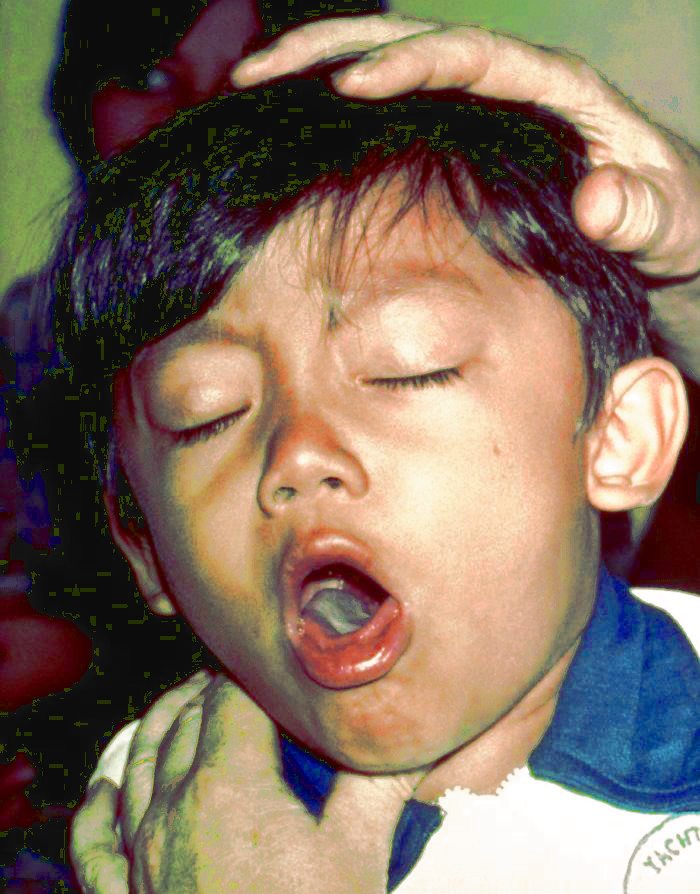
Toothbrush…lightsaber…toothbrush…lightsaber…which removes more plaque?
I’m beginning this blog post under the assumption that the average Science Based Medicine reader is more intelligent, more motivated, and more health conscious than your typical Jane or Joe Blow. As such, most of you probably visit your friendly neighborhood dentist for cleanings and checkups twice a year just like the toothpaste manufacturers American Dental Association recommends. And if you’re like 99% of the patients my dental hygienists and I see in my practice, you get encouraged/chided/scolded to floss more. Because we all know no one flosses like they’re supposed to and that flossing is absolutely the best thing a person can do for his or her oral health, right? We even have posters that have witty quips like “Only Floss Those Teeth You Want To Keep!” Pretty clever, huh? You have to get up pretty early in the morning to be funnier than a dentist.
But how effective is flossing anyway? After all, it is the cornerstone of what we dentists preach to our patients to prevent cavities and gum disease (and evidently have since the Bronze Age), but does flossing really deliver the goods? We dentists are consistently voted as one of the most trusted professions, but can you trust our recommendations about flossing?
Well, I don’t want to come across as one of those conspiracy theory nuts, but this blog post could very well be titled “Things Your Dentist Doesn’t Want You To Know.” It turns out that flossing may not be as beneficial as we have been claiming all these years. But before you throw out the canisters of floss you’ve accumulated over the years (but never use), please stick with me until the very end of the article. After we take a look at the literature, there are some subtleties we need to unpack to get the full story about which oral hygiene practices are recommended.
The literature
Looking at the dental literature, one would think that good studies about flossing and brushing would be abundant, but this isn’t the case. Who knows why, but I assume that it’s one of those topics where efficacy was always presumed from experience – both the patient’s and the dentist’s. There is robust biological plausibility for brushing and flossing: bad bugs live on teeth, said bugs cause cavities and gum disease; therefore, make bad bugs go away and your dental problems will go away as well (to put it in Crislipspeak). Moreover, many of the studies that are published were done by dental product manufacturers, and they obviously have a vested interested in hawking their wares and demonstrating the superiority of their products over their competitors’.
In an attempt to crystalize the data on the matter, a couple of systematic reviews were done, one in the Journal of Dental Research, a high quality, peer reviewed dental journal, and the other by the Cochrane Collaboration, also a well-respected resource for such endeavors. Both of the reviews have been out for a while, but have recently popped up again in the lay press. And as you might be able to guess, much of the “science journalism” is misleading or downright wrong.
The first systematic review I will cover is “Dental flossing and interproximal caries: a systematic review” by Hujoel, et. al. In this systematic review, the investigators assessed the effect of flossing on interproximal (between the teeth) caries (tooth decay) risk. Toothbrushing doesn’t reach between the teeth, therefore flossing is the logical solution to preventing cavities there. The authors identified six trials involving 808 subjects aged 4 to 13. In one of the reviewed studies, children were professionally flossed every school day for 1.7 years, which resulted in a 40% reduction of caries risk. Professional flossings every three months for three years as well as self-performed flossing for two years did not statistically alter caries risk. Again, they looked only at tooth decay reduction, not gum disease. The take home message from this review is that:
- Flossing when done by professionals five days per week works! That means if everything goes just right, if you know what you are doing (e.g., you are a dental hygienist or a dentist), you have good visualization of the teeth from outside the mouth, you are motivated and do the job regularly, you can in fact reduce caries. This is the definition of efficacy.
- If you don’t do it five days per week but just occasionally (even if you are good at it) there is no benefit in terms of lessening your chances of getting a cavity.
- If you ask people (adolescents) to do it themselves, they can not achieve a good result. Why? They probably can’t technically do it right, don’t do it often enough, or some other unknown reason. This is the definition of effectiveness.
- So the conclusion for caries prevention is that flossing has some efficacy but not good effectiveness when left to patients to be the flosser.
OK, now that you’re all bummed out because you’ve been misled by your wonderful dentist and hygienist all these many years, let’s see if flossing confers any benefit in the prevention of periodontal (gum) disease over and above flossing alone. There has to be SOMETHING to this flossing thing, right?
In the Cochrane review, “Flossing for the management of periodontal diseases and dental caries in adults,” Sambunjak et. al. searched multiple data bases in all languages, going back to at least 1950, for studies which assessed the effects of flossing in addition to toothbrushing (as compared with toothbrushing alone) in the management of periodontal diseases and dental caries in adults. Even with these broad search criteria, only twelve studies involving 582 participants were included in the systematic review. Seven of the trials were assessed as “unclear risk of bias”, while the remaining five were at “high risk of bias.” Plaque and gingivitis were the measured outcomes of the studies. While there was not much difference in the amount of plaque found on flossers and toothbrushers vs. toothbrushers alone, there was a statistically significant decrease in gingivitis in the flossing group at one, three, and six months. While this is a good thing, keep in mind that gingivitis is merely inflammation of the gums: the redness, puffiness, and bleeding you see in gums that aren’t healthy. This is to be distinguished from periodontitis, which is when the infection actually penetrates into the jaw bone surrounding the teeth, causing tooth mobility and ultimately tooth loss. So while this systematic review did show benefit in gingivitis reduction, there was no real benefit in terms of outcomes like tooth retention or other quality of life issues. In a nutshell, the investigators concluded that “(t)here is some evidence from twelve studies that flossing in addition to toothbrushing reduces gingivitis compared to toothbrushing alone. There is weak, very unreliable evidence from 10 studies that flossing plus toothbrushing may be associated with a small reduction in plaque at 1 and 3 months.” They also pointed out that in this review, “(n)o studies reported the effectiveness of flossing plus toothbrushing for preventing dental caries” in adults.
To summarize, flossing might make your gums less puffy, and likely makes your mouth feel better without those hunks of shredded chicken stuck in that annoying space between your molars, but it really doesn’t do much in terms of any sort of disease prevention.
As a dentist, these reports are distressing to me, as our brushing and flossing screeds have always been the cornerstone of our oral health education, not only in our practices, but in public health and dental outreach programs as well. As a health care practitioner with a science-based outlook, however, I must accept the current evidence and realize that when I recommend brushing and flossing, it is for reasons other than caries and periodontal disease prevention. It’s tough to change a fundamental worldview like this, but change it I must.
That being said, I am still going to recommend that my patients brush and floss, and I’m pretty sure I will continue to brush and floss myself. Why? For one, it’s in our DNA. Just as salmon must return to their birth rivers to spawn, we dental professionals are compelled to drone on and on about brushing and flossing. We can’t help it. Second, floss is cheap, and there’s really no downside to doing it. Third, the reviews discussed above are statistical analyses, and despite the overall lack of proven efficacy on a population level, on an individual basis there will be people who may prevent disease by good oral hygiene practices. And finally, most people don’t want their mouths to taste and smell like the bottom of a birdcage. I will, however, make a point henceforth to not tell my patients that if they brush and floss more/better they won’t get as many cavities or have as many periodontal issues. Instead, I will focus on proven, science-based methods for disease prevention such as fluoride use, sealants when and where indicated, dietary counseling to reduce sugar consumption, smoking cessation to reduce periodontal disease risk, and the like.
But I digress
So now that we are all up to speed on flossing research, I’d like to turn my attention to how this research has been playing out in the lay press. As passionate as I am about a scientific worldview in medicine, dentistry, and practically all areas of life, I am equally passionate about science communication, science education, and science journalism. Having good scientific information is one thing; disseminating that information to the public (including policy makers as well as consumers) is another. Science communication is unfortunately all over the map quality wise. Science sections of newspapers and science editors in general are becoming dying breeds. For example, the above systematic reviews were reported in one notorious rag from the UK thus:
Pretty pathetic interpretation of the reports, in my opinion. Now, to be fair, the article itself isn’t too bad, but this headline is a travesty. Even the subheader says “Bad technique can push bacteria and plaque further into the gums” and “This can increase the risk of gum disease and cause painful damage.” Well no, not really, unless it is your habit to flog your gums like a rented mule.
Forbes, on the other hand, posted an accurate and humorous article entitled “Dentists Say You Need to Floss. Science Says You Don’t.” Excellent title, one I wish I would have thought of first. No sensationalism, no misleading headlines, just a well-written review of the material, as it should be.
I bring this up because I believe it is important to remain vigilant, not only in applying critical thinking and rationalism to the issues of the day, but also to note how that information is packaged and fed to the public. Often, people will not read past the headlines, and by contaminating good scientific information, these publications distort and mislead a public who needs high quality scientific information more than ever.
To floss, or not to floss? That is the question. Now that you are armed with the evidence, you can make the choice which is best for you. If you want to prevent tooth decay, you should focus on reducing your sugar intake, use a fluoridated toothpaste, and perhaps a fluoride mouth rinse. Whether you decide to floss or not depends on your desired outcome. For a fresh, debris-free mouth, yes, go ahead and floss away. If your desire is to prevent cavities or periodontitis, other methods are more effective.
Final note: I am deeply indebted to my friend Dr. Robert J. Weyant for his assistance and advice during my research for this blog post. Bob is a professor and associate dean for Dental Public Health and Community Outreach at the University of Pittsburgh School of Dental Medicine. He also is a longtime lecturer at the annual ADA Evidence-Based Dentistry Champion Conference, and is the host of the excellent ADA Science Podcast.

